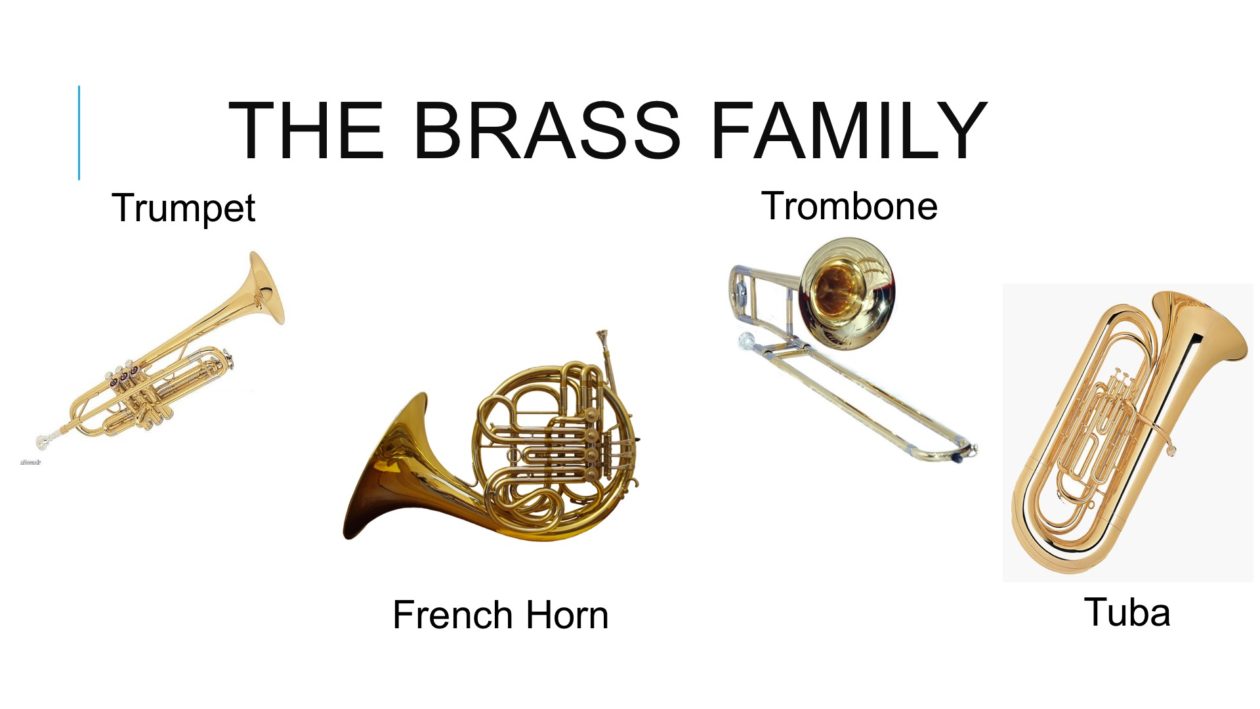Brass instruments produce a sound caused by a vibration in the player’s lips. The player buzzes their lips into a metal mouthpiece, the vibration is then amplified by the rest of the instrument. Variations in the shape of the instrument produce different tones. Smaller brass instruments such as the trumpet can play higher pitches, whereas bigger ones such as the tuba produce lower pitches.
Valves and Slides

Most Brass instruments use valves (usually 3) which, when pressed, open and close different lengths of tubing. The longer the tube, the lower the note. Pressing different combinations of valves produces all the same notes that are available on the keyboard. There are 7 practical valve combinations.

A trombone uses an extendable slide instead of valves. The principal is the same though: as you extend the slide, you make the tube longer and therefore the note lowers in pitch. There are 7 trombone slide positions, but, unlike valved brass instruments, the trombone is able to transition smoothly between notes.


